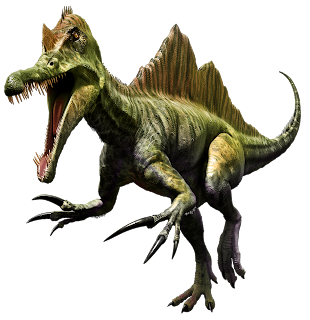Toe-tally spies: to achieve the fly-on-the-wall crawling abilities of geckos, robots will need “flexible, hairy toes”.
New research by biologists of the Nanjing University of
Aeronautics and Astronautics, and the University of California, explains some
geckos’ gravity-defying ability to run sideways across walls. Tokay geckos can
run sideways just as quickly as they can climb upward, Yi Song and his team
discover, because their toes allow them to quickly adapt to changes in
direction and surface texture. Such research may inform designs for new
mechanical feet, which would allow robots to exhibit the same spectacular
skill set.
You’re sat outside on a scorching Summer morning. Sun pours across the ground, and the walls around you are hot with residual heat. Out of nowhere, a gecko dashes across the bricks in front of you. Small, speedy, and shockingly nimble, it moves like a flash, up and across the horizontal wall as if the surface were as flat as the ground your chair sits on. You watch it as it hurries up and across the balcony roof above you, clinging to the ceiling as if gravity did not apply.
Now
imagine that it’s not a gecko you spot, but a robot, moving just as dextrously.
As
the field of biomimetics expands, this scene may not be that far from
plausible. Engineering frequently takes
inspiration from the natural world, and a design like this would certainly not
be the first time that gecko anatomy had inspired a new development.
In fact, the structures that allow geckos to travel in this way have already been
replicated in materials from silicones to plastics to nanotubes. Now, moving
onto designing robots with these abilities may not be such a distant
development, this week’s newly published research by Yi Song et al. suggests.
But
before we can speculate about robots, we must first understand geckos. Geckos
possess many unique skills,
most notably their ability to scale walls and cling to ceilings. The secret to
their success? A structure that, in itself, is not unusual at all. In fact, you have millions of a similar kind yourself – but none that are quite this
specialised. It’s hair!
Tiny
rows of hairs, known as setae, run across the underside of gecko feet, allowing
them to do far more than just ‘stick’. ‘Sticking’ to surfaces wouldn’t be
particularly useful to geckos; they need to move, and fast. That’s where setae
come in. Invisible to the human eye, these miniscule structures and their even
tinier, branch-like ends, allow geckos to cross surfaces at speeds of 20 body lengths per second.
Under
the pressure of a gecko’s body weight, setae are pressed closely into the
microscopic contours of surfaces like walls and ceilings. So closely, that the
electrons of hair molecules can interact with electrons of the wall molecules,
to form weak attractions known as ‘Van der Waals’ forces.
These forces create a secure temporary foothold, which is also easily broken
when setae are pulled away. Think Velcro™, but with forces. The result: a gecko can traverse surfaces at any pace it chooses,
without falling off or becoming stuck.
So, gecko feet aren’t ‘sticky’ at all. Instead, flexible setae on
the bottom of their agile toes interact with textured surfaces, to generate temporary
electrostatic forces. However,
setae alone cannot be given all the credit for the lizard’s acrobatics. Another,
larger, structure takes responsibility for the animal’s agility and adaptability,
as Song and his team discovered.
Using
a technique called ‘frustrated total internal reflection’, which causes surfaces to light up on
contact with a Tokay gecko’s feet, Song was able to observe gecko toes swiftly
realigning against gravity as they crossed the surface. Critically, he noticed
that during sideways wall crossing, the toes of the hind and forefeet which
were on the surface of the lizard nearest to the ceiling acted in the same way
that both forefeet do while climbing. This allowed the gecko to maintain their
attraction to the surface, even while travelling sideways at speed.
What’s
more, by adding slippery patches and irregular surfaces to his experiments,
Song demonstrated that in challenging terrain, geckos take advantage of their
multiple soft toes to maintain contact with the surface. On these unpredictable
surfaces, there is a higher likelihood of toes slipping or setae being unable
to make close enough contact for attraction. To combat this, geckos can use
their many toes individually, thus increasing the likelihood that at least one
attaches successfully. At the same time, the toe’s soft texture makes them
flexible and able to conform to rough surfaces – yet another way to ensure
stability.
These
discoveries not only shed light on an interesting biomechanical phenomenon, but
may inform new developments in robotics. Designs for robot feet with similarly
adept mechanical toes, for example, could allow robots to move more quickly, and
across a wider range of surfaces. Perhaps soon, the hairy, agile
toes of Tokay geckos could be seen not only on their own clever feet, but on
those of new, better robots.
Article Reference: Song, Y., Dai, Z., Wang, Z., Full, R. (2020). Role of multiple, adjustable toes in distributed control shown by sideways wall-running in geckos. Proc. R. Soc. B. 287: 20200123. doi: 10.1098/rspb.2020.0123
See also: https://www.eurekalert.org/pub_releases/2020-05/uoc--tcl050820.php
Article Reference: Song, Y., Dai, Z., Wang, Z., Full, R. (2020). Role of multiple, adjustable toes in distributed control shown by sideways wall-running in geckos. Proc. R. Soc. B. 287: 20200123. doi: 10.1098/rspb.2020.0123
See also: https://www.eurekalert.org/pub_releases/2020-05/uoc--tcl050820.php




Comments
Post a Comment